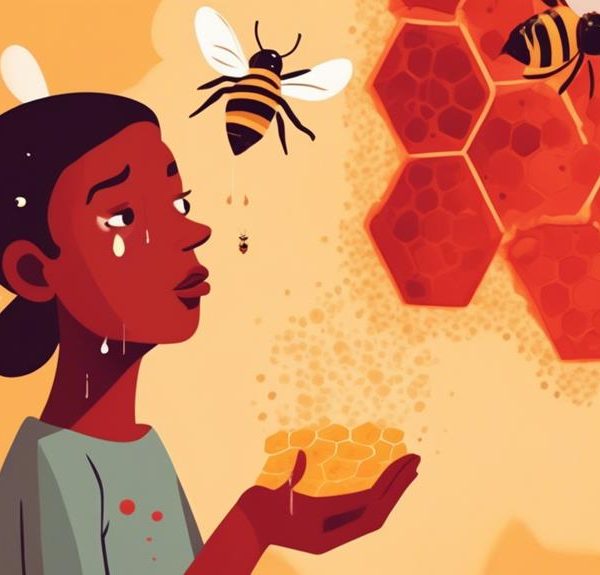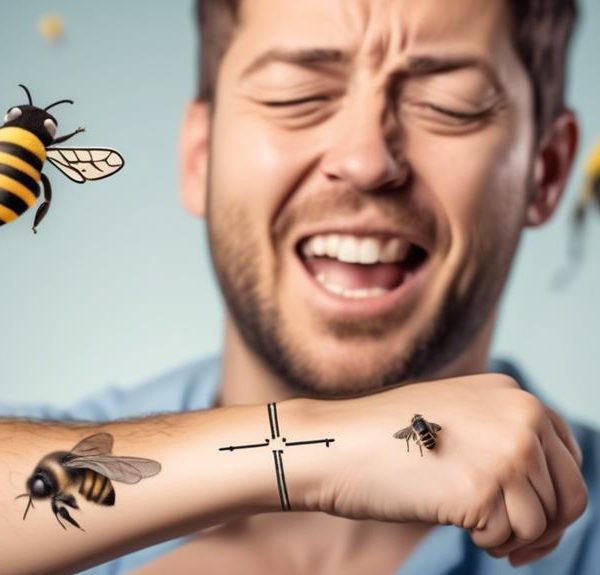Harness your curiosity as we delve into the mysterious reasons behind finding dead bees in your garden – and how you can help.

Why Am I Finding Dead Bees in My Garden
You've noticed them in the morning, you've seen them in the afternoon, and even in the evening you're finding dead bees scattered throughout your garden. At first, it's a curiosity, then it becomes a concern.
You're not a beekeeper, but you understand the vital role these industrious creatures play in our ecosystem. It's unsettling to see them dying off in your garden, but what could be causing it?
You're about to uncover some potential reasons and, perhaps, what you can do to help.
Key Takeaways
- Bees go through four stages of life: egg, larva, pupa, and adult.
- Bees can be affected by bacterial, viral, and fungal infections, as well as parasitic mites.
- Pesticides can harm bees by affecting their central nervous system and weakening their immune system.
- Inadequate food sources, such as mono-cultures and concrete jungles, can weaken hives and make them more susceptible to diseases and parasites.
Understanding Bee Life Cycles
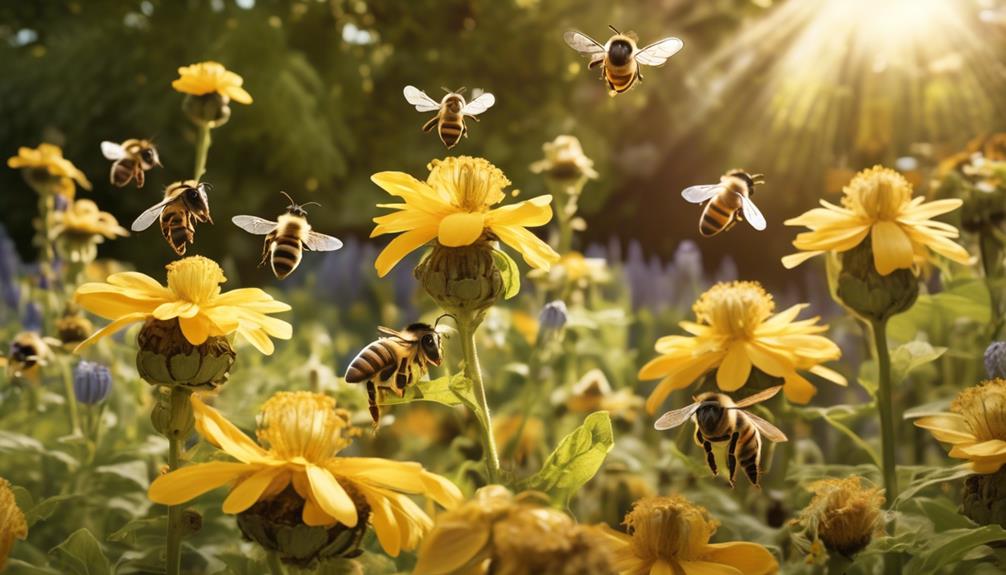
To fully comprehend why you're finding dead bees in your garden, it's crucial to understand the lifecycle of these fascinating insects. Bees, like any other insect, go through four stages of life: egg, larva, pupa, and adult.
The queen bee lays the eggs, which hatch into larvae after three to four days. These larvae are then fed a diet of royal jelly for a couple of days, after which worker bees switch to providing honey and pollen. The larval stage lasts about five to six days, after which they spin a cocoon and enter the pupal stage.
The pupal stage is a time of metamorphosis, where the bee transforms into its adult form. This stage can last anywhere from 12 to 20 days, depending on the bee species and environmental conditions. Once the adult bee emerges, it's ready to begin its work in the colony, which involves collecting pollen and nectar, defending the hive, or laying eggs in the case of a queen.
Understanding this cycle is key to identifying why you might be finding dead bees; it could be a natural part of their lifecycle or a sign of a larger issue.
Common Bee Diseases and Pests
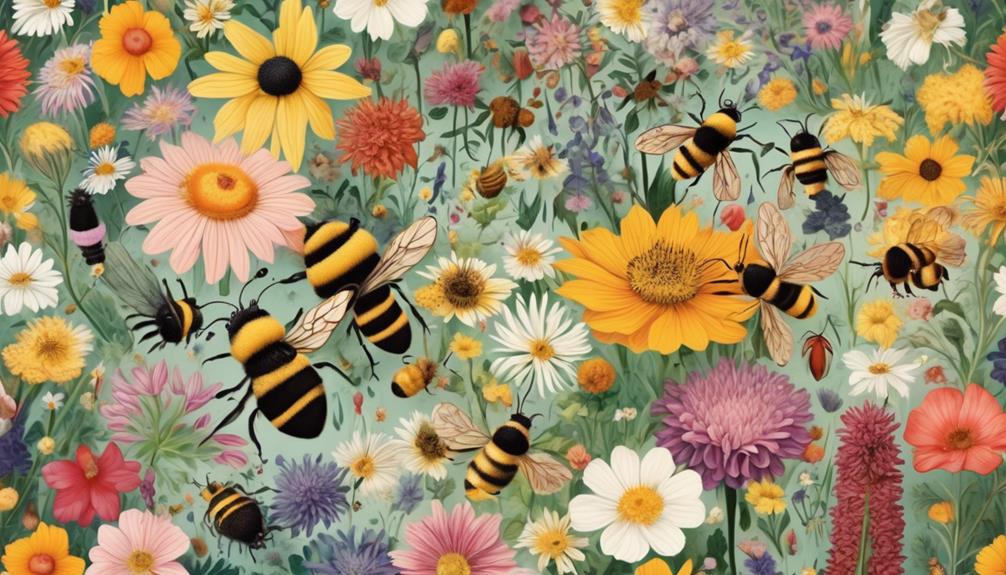
Diving into the world of bee diseases and pests, you'll find that these tiny creatures face a myriad of challenges, including bacterial, viral, and fungal infections, as well as parasitic mites and destructive predators.
Bees can fall victim to American Foulbrood, a bacterial disease that destroys their larvae. Nosema disease, a fungal infection, can damage their digestive systems, leading to reduced lifespan and colony decline. Viral diseases such as Deformed Wing Virus can also wreak havoc within a hive.
Parasitic mites, particularly Varroa destructor, latch onto bees and suck their hemolymph, weakening them and spreading viruses. Small hive beetles and wax moths are destructive pests that can damage the honeycomb structure and the bee brood.
These adversities can weaken or wipe out entire colonies. You're not powerless though. Regular monitoring, appropriate pest control, and maintaining good hive hygiene can mitigate these threats. Understanding these challenges is the first step in helping your garden's bees stay healthy and productive.
After all, they play an essential role in pollination and maintaining biodiversity. The survival of these bees may largely depend on your informed actions and interventions.
Impacts of Pesticides on Bees
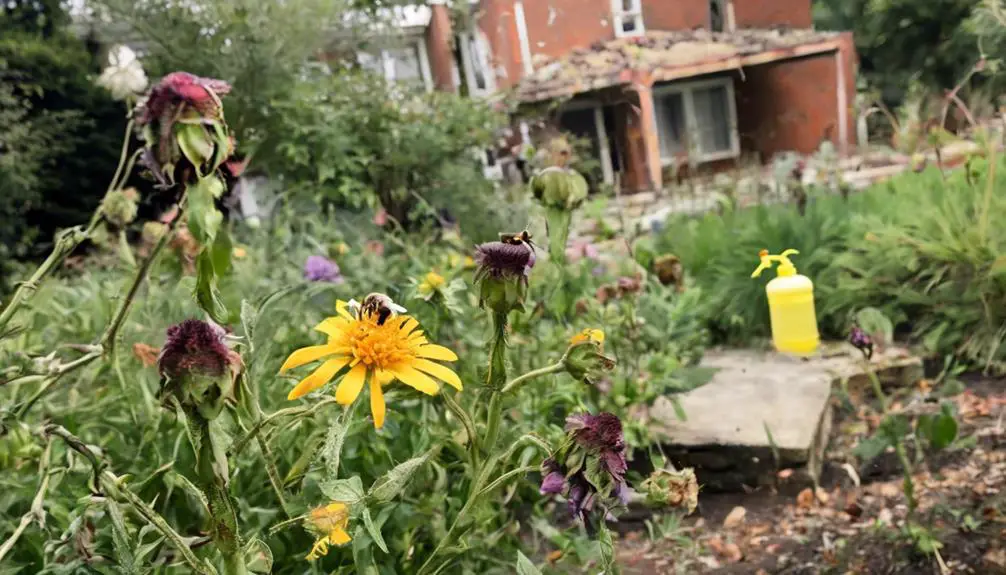
Shifting our focus to another significant threat, you should be aware that the widespread use of pesticides in gardens and crops can have devastating effects on bee populations. These chemicals are designed to eliminate pests, but they don't discriminate between harmful insects and beneficial pollinators.
Many pesticides, particularly neonicotinoids and pyrethroids, act as neurotoxins affecting the central nervous system of bees. Exposure leads to disorientation and impaired mobility, which can result in starvation and death as bees are unable to return to their hives. It's important to note that even sublethal exposure can have significant impacts. It can disrupt foraging behavior, impair learning and memory, and reduce reproductive success.
Furthermore, pesticide exposure can weaken a bee's immune system, making them more susceptible to disease and pests. Studies have shown a synergistic effect between pesticides and pathogens, where bees exposed to both fare much worse than those exposed to either threat alone.
Effects of Inadequate Food Sources
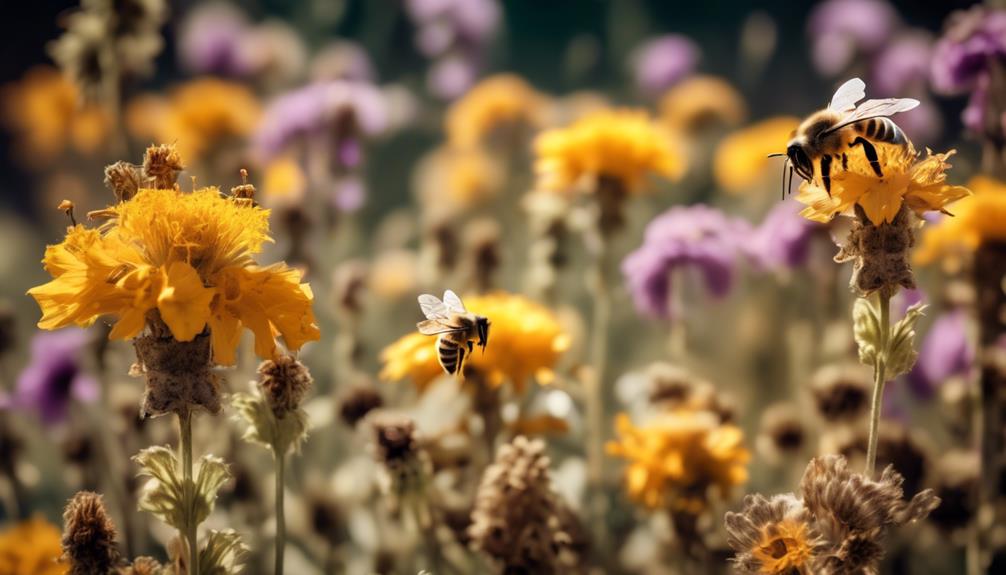
While pesticides pose a grave threat to bees, another often overlooked factor contributing to their decline is the scarcity of sufficient and nutritious food sources. Bees, like any other living organism, require specific nutrients to thrive, and when these aren't available, their health deteriorates rapidly.
You might wonder, what do bees eat? Bees feed on nectar and pollen from a variety of flowering plants. Nectar provides them with carbohydrates for energy, while pollen is a rich source of protein and other essential nutrients needed for growth and development.
In a world increasingly dominated by human activities, diverse plant habitats are being replaced with mono-cultures and concrete jungles. This results in nutritional imbalance in bees, as they're forced to rely on a limited range of plants. Furthermore, periods of food scarcity can occur when these mono-cultured plants aren't in bloom.
Inadequate food sources not only affect the health and longevity of individual bees, but they also impact the overall productivity of the hive. A weakened hive is more susceptible to diseases and parasites. So, next time you're planning your garden, remember, a variety of flowering plants can make a big difference to the bees.
Signs of Colony Collapse Disorder

If you're finding an unusual amount of dead bees in your garden, you might be witnessing signs of Colony Collapse Disorder (CCD), a mysterious phenomenon that's been plaguing bee populations worldwide. CCD is characterized by a sudden reduction in the hive's worker bee population, with a live queen and usually honey and immature bees still present.
You can identify CCD by checking for common symptoms. Firstly, observe if there's a rapid loss of adult worker bees. Then, check if there's a noticeable lack of dead bees near the hive, indicating that bees are dying away from it. A hive afflicted with CCD won't immediately be taken over by other pests or organisms, so look out for that as well. If the hive has a queen and a few nurse bees taking care of the remaining young bees, it's another sign of CCD. Moreover, the remaining worker bees will appear reluctant to consume provided feed.
It's crucial to note, however, that these signs aren't definitive proof of CCD. A comprehensive investigation by a professional is required. If you suspect CCD, contact your local extension service or a beekeeping association immediately.
Frequently Asked Questions
What Types of Plants Attract Bees to a Garden?"
You're probably seeing more bees because you've got plants they love. Bees are attracted to a variety of plants, particularly those with bright, vibrant colors. Lavender, sunflowers, and marigolds are big bee favorites. They're also drawn to plants with a strong fragrance, like mint or rosemary. Additionally, they prefer plants that produce a lot of nectar, such as salvia and honeysuckle.
How Can I Safely Remove Bees From My Garden Without Killing Them?"
You're keen on removing bees from your garden without harming them. That's commendable!
First, avoid using pesticides, they're lethal to bees.
You could plant less bee-attracting flowers or use natural repellents like citronella.
Better yet, contact a local beekeeper or a professional bee removal service. They'll safely relocate the hive.
Are There Any Natural Predators of Bees That Could Be Causing Their Deaths?"
Yes, several natural predators could be causing bee deaths in your garden. Birds, spiders, and even other insects like wasps and dragonflies prey on bees. Additionally, mammals like badgers and bears are known bee predators.
If you're noticing an increase in these predators, they might be the culprits. However, it's also possible that disease or pesticides are killing the bees.
You'd need to observe carefully to determine the exact cause.
How Can I Tell if a Bee Is Sick or Just Resting?"
You can often tell if a bee is sick by its behavior. Healthy bees are usually active, busily flying from flower to flower. If you're seeing bees that are lethargic, walking around aimlessly, or displaying uncoordinated movements, they might be sick.
Additionally, physical signs like deformed wings or a shiny, greasy appearance might indicate disease. However, remember, bees also rest, especially in cooler weather. So, don't automatically assume a still bee is sick.
What Should I Do if I Find a Bee Nest in My Garden?"
If you stumble upon a bee nest in your garden, don't panic or try to remove it yourself. Bees are crucial for pollination and many species aren't aggressive unless provoked.
So, keep a respectful distance and let them be. If the nest is in a high-traffic area and poses a risk, contact a local beekeeper or pest control service who can safely relocate the nest without harming the bees.
It's important to support these valuable creatures, not harm them.
Conclusion
So, you're finding dead bees in your garden. It's likely due to a combination of factors: disease, pests, pesticides, lack of food, or even colony collapse disorder.
It's vital to understand these factors and their effects on bee populations. Remember, bees play a crucial role in our ecosystems and agriculture. Let's do our part to support their survival.
Knowledge is the first step towards more bee-friendly practices.

